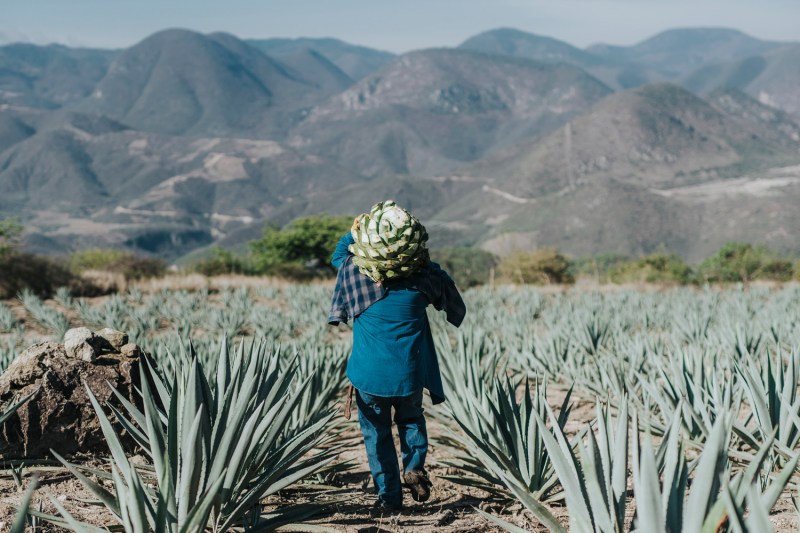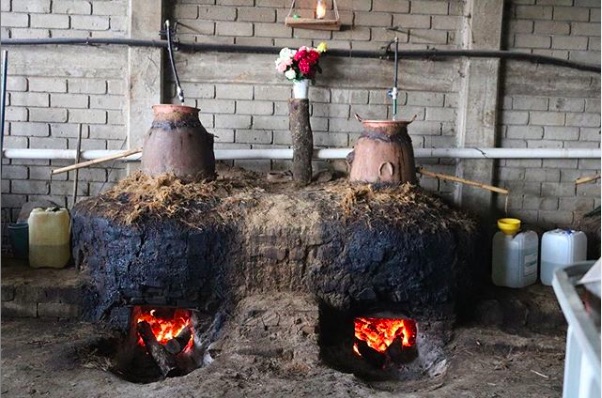Mezcal is firing on all cylinders these days, and it’s not just riding the rise of tequila’s coattails. The distinctive spirit, to agave a bit like Scotch is to whiskey, is more popular than ever and shows no signs of slowing down.
Reports suggest that mezcal production jumped ten percent from 2019 to 2020. Nielsen numbers indicate that the number of exports to the U.S. between 2015 and 2019 jumped fivefold. Producers took a hit during the pandemic, as so many industries did, but they are looking to bounce back. Smaller outfits tend to rely on local tourism to sell their wares but hopefully, with the added awareness here in the U.S., more importers will bring on some quality labels and expose more of us to this one-of-a-kind drink.
“Related
- 11 Smooth Drinking Tequilas For Cocktails or Sipping Straight
- Don Julio’s Grandson Creates a Sustainable Tequila Brand for Millennials
- How To Make Sangrita That Will Make You Fall in Love With Tequila Again

It’s Its Own Thing
To understand mezcal better, one needs to dissect a few myths hovering around the spirit. Naysayers write the stuff off as smoky tequila and a little more. And while many mezcals are smoky, the smoke spectrum is pretty broad and dependent on the amount of resin in the wood during production. Another myth has to do with aging, but it’s a fair one given that most of what ends up in the states is the clear, un-aged, or barely aged stuff. There can be Reposado and Añejo mezcals too, aged in wood or even in glass containers.
Some even think mezcal should only be consumed neat and while that’s a fine way, most of us have evolved past that. Many other spirits started the same way, ultimately finding a great home in a number of standup cocktails. Because mezcal is made from some 46 different species of agave (not to mention in nine different Mexican states), what you end up with as a spirit is quite diverse, flavor-wise. Granted, most of what ends up here is made in Oaxaca (as estimated 90% right now), but each producer has their own way of creating the stuff and the resulting spectrum is fun to explore.
The Popularity
There is no question that tequila has helped elevate mezcal’s role in the drinks world. Shining a spotlight on Mexico has made us all thirsty for the many other things produced there, very much including mezcal. It’s presently one of the fastest-growing drink categories in the U.S., with the spirit showing up on cocktail menus from sea to shining sea. Mezcal has officially gone from something bartenders occasionally chatted about and poured samples of after-hours to a bona fide contender not just among agave spirits, but spirits at large.
Part of the popularity is owed to its versatility. Mezcal can fill in just about anywhere tequila can but can also plug into drinks that involve Scotch or other types of whiskey.

The Future
Now that mezcal has made waves here in the states, we get to enjoy the best part of that arrival. In the next year or two, we’ll be treated to more options, allowing us to really gain an appreciation for the nuance and terroir involved. Bartenders will continue to fine-tune their recipes and we may even see more Mezcal-centric eateries and bars pop up, especially under an administration that doesn’t think poorly of our neighbors to the south.
If mezcal follows in tequila’s footsteps, we will almost surely see a growing number of luxury brands. Watch for celebrities to lean into the trend, investing in or starting up their own mezcal-focused labels. The popularity is something to be cautious of and consumers would be wise to invest in brands that truly care about sustainability, from an environmental and social standpoint. This is especially important with mezcal, which is a highly traditional export waiting to be gobbled up by big brands that care more about bottom lines than anything else. If things get out of hand, the quality will diminish and there may even be a shortage of agave, as it tends to regenerate slowly and not respond well to large, industrialized operations.


